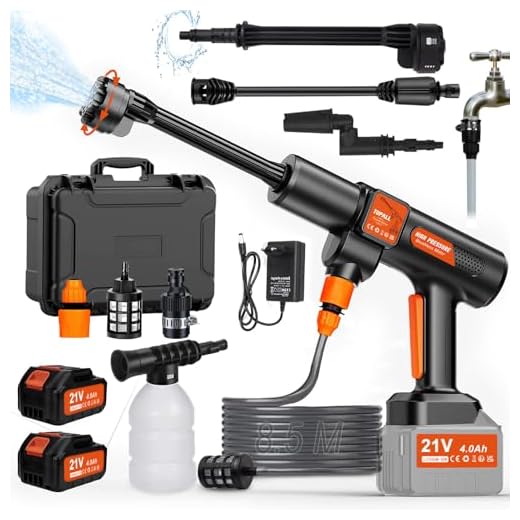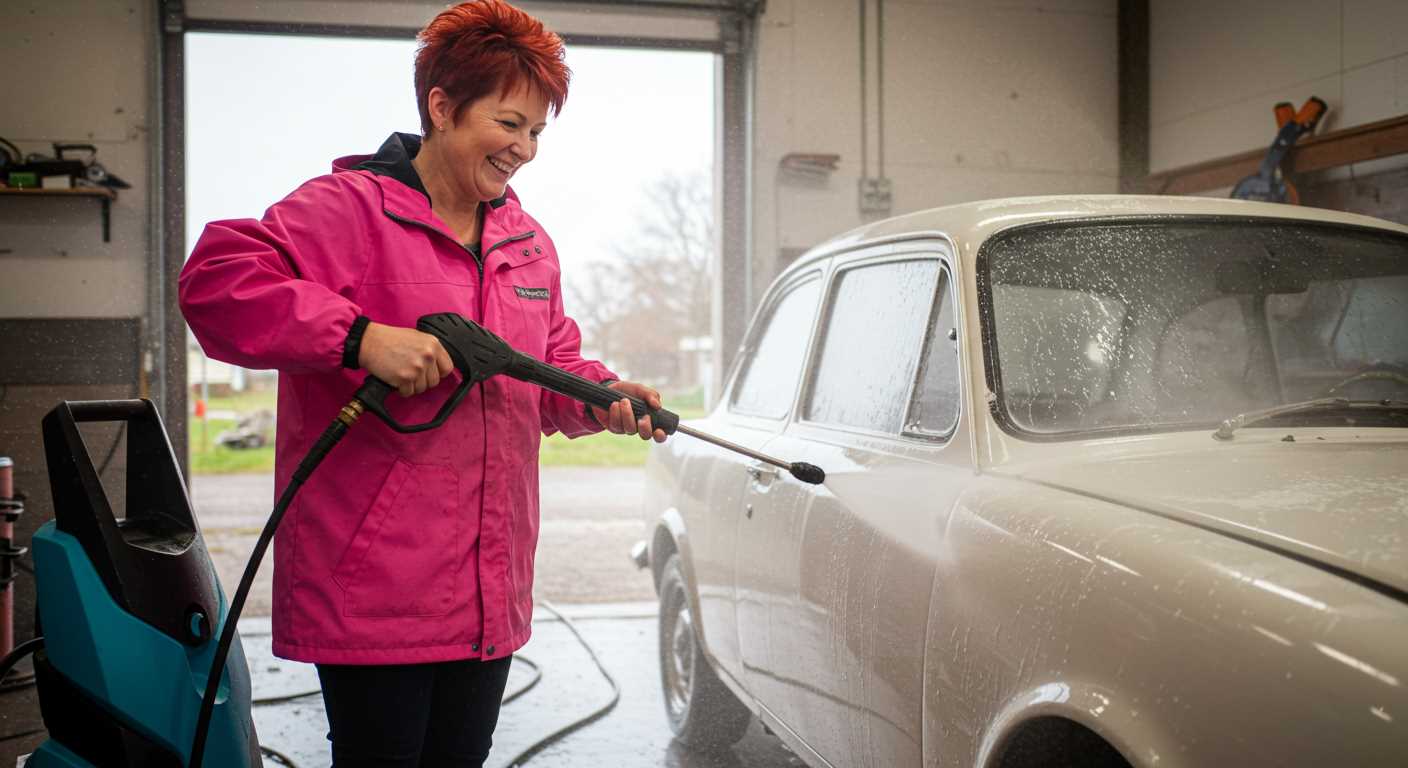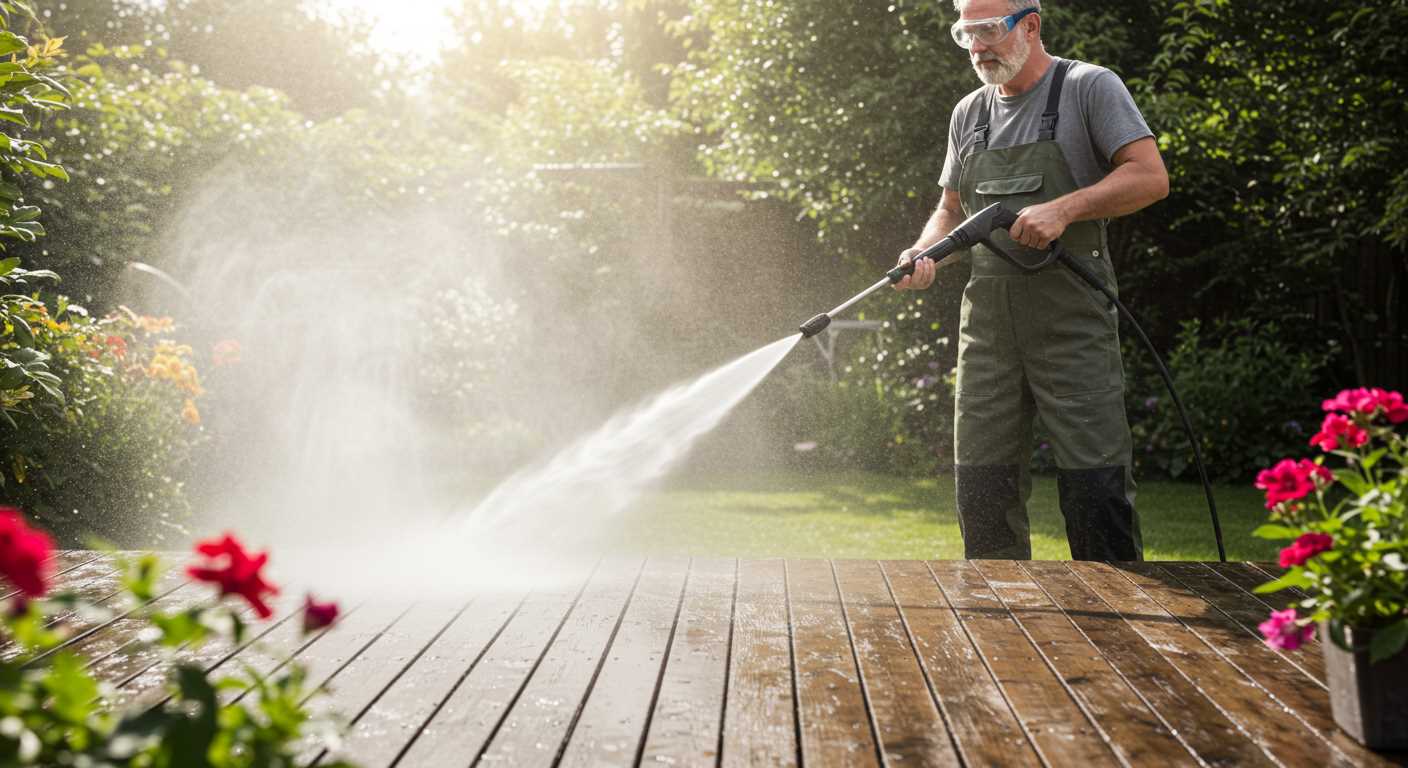

For anyone serious about outdoor cleaning, a turbo attachment significantly enhances performance. This accessory combines high-pressure with a rotating action, creating a powerful jet that increases efficiency, making it ideal for removing tough dirt and grime.
Experience shows that this type of attachment excels on hard surfaces. When tackling concrete, patios, or driveways, the spinning motion ensures a wider area is covered, which speeds up the cleaning process. Instead of a narrow stream, a cone-shaped spray amplifies the force, allowing for deeper penetration into stubborn stains.
In my time testing various brands, I’ve found this tool particularly helpful when dealing with moss, algae, or embedded dirt. Adjusting the distance from the surface enhances control, so you can avoid surface damage while maintaining effective cleaning. It’s a versatile addition that elevates your outdoor maintenance game.
Understanding the Functionality of Turbo Nozzles
For maximum cleaning performance, I recommend using a rotating nozzle attachment. This tool combines high-pressure water flow with a rotating spray pattern, delivering concentrated power that is especially effective on stubborn grime.
Here’s what I’ve learned about its operation:
- The rotation creates a wider cleaning path compared to a standard spray, allowing you to cover more area effectively.
- By concentrating the pressure on a small surface area while rotating, it breaks down and lifts dirt more efficiently.
- This attachment is ideal for hard surfaces like concrete, driveways, and patios where traditional tips struggle.
I’ve observed significant differences in cleaning times and results when using this accessory. To achieve optimal results, ensure you select the correct pressure setting for your unit, as too much force may damage certain surfaces.
In addition to that, regular maintenance of the rotating mechanism is advisable; debris can impede movement, reducing effectiveness.
When attempting to tackle large and tough cleaning jobs, a rotating attachment truly enhances your ability to restore surfaces efficiently.
Comparing Turbo Nozzles to Standard Nozzles
For superior cleaning capabilities, I recommend opting for a high-velocity attachment over conventional options. The primary advantage lies in the concentrated water stream that rotates, amplifying the impact on surfaces, making it ideal for tough grime and stubborn stains.
Standard attachments typically provide a consistent spray pattern that may suffice for light cleaning tasks, but they lack the intensity needed for deeply embedded dirt. In comparison, the rotating feature of the advanced attachment increases the effective pressure applied, resulting in a more thorough clean while minimising the time spent on each job.
Another consideration is versatility. An advanced attachment is adaptable for various cleaning tasks, from patios to vehicles, adjusting effortlessly to surface types, whereas a standard tool is often limited in application. This adaptability not only saves time but also enhances overall efficiency.
Durability is another factor that may influence your decision. While both options can wear over time, the advanced variant is often designed with materials that can withstand high-speed operations, reducing the frequency of replacements.
In conclusion, choosing the high-velocity attachment enhances cleaning performance significantly, especially for challenging applications. If efficiency, speed, and versatility are priorities in your cleaning routine, investing in this advanced tool will provide excellent returns.
Identifying Suitable Applications for Turbo Nozzles
For exterior surfaces that accumulate stubborn grime, a rotating jet attachment is beneficial. Use it on paved areas, driveways, or sidewalks to effortlessly lift dirt and stains. It’s highly effective against mildew and algae on decks or patios, providing a deep clean without excessive wandering.
Concrete and Masonry
For driveways or similar structures, the power generated by the rotating stream is ideal. It can easily strip away oil spills and built-up pollutants. Be cautious with older, fragile surfaces, as the force could cause damage.
Vehicles and Equipment

When cleaning machinery or vehicles, switch to a lower pressure to avoid harming paintwork or sensitive components. This feature excels at blasting away dirt without excessive risk, especially for larger vehicles or industrial equipment.
How to Install a Turbo Nozzle on Your Pressure Washer
To install this high-performance attachment, ensure that the machine is powered off and disconnected from the water supply. Start by selecting the appropriate size and type of connector for your specific device. Most connectors are universal, but double-check compatibility to avoid damage.
Steps for Installation
1. Remove the existing attachment by unscrewing it from the lance. This may require a bit of force if it’s been attached for a long time.
2. Clean the threaded area with a cloth to eliminate any debris or old sealant. This ensures a proper seal with the new accessory.
3. Align the new attachment with the lance and screw it in by hand. Do not overtighten, as this can strip the threads or damage the fittings.
4. If your equipment uses a quick-connect system, simply push the accessory into the connector until you hear a click. This indicates it’s securely attached.
5. Reconnect the water supply and turn on the device to check for leaks around the fittings. If any water seeps through, tighten the connection slightly.
Final Check and Testing
Test the functionality by aiming the spray at a test surface. Adjust the angle and distance accordingly to ensure optimal performance. If the attachment isn’t functioning as expected, re-evaluate the connection and alignment. Proper installation is key to achieving the best cleaning results.
Maintenance Tips for Turbo Nozzles
Regular cleaning is crucial for optimal performance. After each use, rinse the attachment with clean water to remove any debris or detergent residue. This prevents clogs and ensures consistent water flow.
Inspect the connection and o-rings for wear. Replace any damaged seals to maintain pressure integrity and avoid leaks. A tight bond is essential for effective operation.
Storage Best Practices
Always store the device in a dry location, avoiding extreme temperatures. Exposure to moisture can lead to rust, while high heat can degrade materials. Position it in a protective container or dedicated storage case to minimise potential damage.
Seasonal Check-ups
Conduct seasonal inspections to catch wear early. Look for signs of cracks or other surface damage. Lubricate the moving parts as recommended by the manufacturer to ensure long-lasting functionality. Regular attention will prolong the lifespan of your tool.
Common Issues and Troubleshooting for Turbo Nozzles

Clogging is a frequent problem. Debris, dirt, or hard water deposits can obstruct the orifice. I recommend inspecting the outlet regularly and using a thin wire or needle to clear any blockages. A thorough flush with clean water can also prevent buildup.
Poor Cleaning Performance
If you notice ineffective cleaning, check the spray pattern. An erratic pattern may indicate wear or damage. Ensure that the attachment is securely fastened, as a loose connection can disrupt the flow and diminish effectiveness. If the issue persists, replacing the unit may be necessary.
Excessive Wear and Tear

Regular usage can lead to wear over time. Examine seals and O-rings for signs of degradation. These components should be replaced at the first hint of wear to maintain optimal performance. Additionally, avoid using the accessory with a pressure setting exceeding its rating to extend its lifespan.







